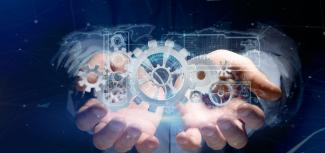The situation today - regular inspections Cars, but also other machines, are regularly inspected. In the course of such inspection, individual components are changed on the basis of:
- Previous theoretical calculations (in the case of a car, changing the timing belt every specified number of cycles).
- Machine condition (in the case of a car, change of brake pads based on their wear).
- Display of the on-board computer (in the case of a car, the "engine" control light came on).
The latter case is the simplest example of "predictive maintenance" solutions. Instead of waiting for a failure to occur, you are looking for subtle signs indicating the risk of its occurrence. Soon these types of technologies will completely change the way most industrial plants are used and not only that.
How to predict the future?
In order to effectively predict what bad things may happen to the machine in the future, we need to arm ourselves with an arsenal of helpful tools:
Theoretical models - thanks to the theoretical models developed over the years, we understand the physics of mechanical, flowing, thermodynamic phenomena taking place in various machine components. Thanks to the theoretical models we know when individual components can wear out and how to interpret potential changes in the observed machine operation.
Numerical simulations - on the basis of theoretical models, numerical simulations covering the whole work of the machine are created. Computers with high computing power allow already today to very effectively assess the strength of complex structures or flow and thermal phenomena taking place in complex structures such as aircraft engine.
Historical data - companies that had a high culture of data collection are now in a very good position. Thanks to them, they know the scenarios that led to failures in the past and can know what are the first symptoms indicating the imminent danger. The historical data can also be the basis for developing the models presented below.
Semi-empirical models - combine theoretical knowledge with experience gained from historical data. Semi-empirical data can, for example, provide us with information about erosion of individual engine components during operation, and theoretical knowledge allows us to assess how it will affect the efficiency of the system and whether it poses a threat to continuity of operation.
Non-linear Signal Analysis - advanced methods of signal analysis allow for the so-called "feature extraction". When changes in the recorded signals are visible to the naked eye, it is usually too late. Non-linear analysis allows to extract subtle anomalies before they are visible to the user.
Artificial Intelligence - n recent years, we have increasingly seen working examples of systems that assess machine performance using artificial intelligence. These are completely new possibilities that allow the algorithm to "learn" possible scenarios of machine operation from historical data. The disadvantage of AI models is that they do not give a reason for one decision or another. They can be very effective in evaluating the state of operation, but without additional analysis they do not provide an explanation "why".
Virtual Twin
None of the above tools will ensure success alone. But integrating some of them can give amazing results. Imagine that, in parallel with the launch of a new plant in an industrial plant, we are launching its multi-part model. Such a model works on the basis of data recorded in the machine. To interpret it it uses theoretical assumptions, numerical simulations, semi-empirical algorithms and scenarios known from historical data. The recorded data is analyzed using non-linear signal analysis and artificial intelligence algorithms. Such a model is called a "digital twin" (or shorter DT).
The aim of the "twin" is to best represent all phenomena taking place in the system. However, it has one, essential, advantage - its failure does not cost us anything. Since the "twin" exists in virtual space, we can also always move the time slider and see how it will work in the future. On this basis, we will find out which elements are most vulnerable to failure by the next review. In the course of work, the virtual twins will allow us to assess which changes require immediate stopping of work and which will not have a negative impact on working conditions. Manufacturers of available solutions declare that Digital Twin technology brings a 40% reduction in unplanned downtime after just one year of operation. DT also allows to optimize working conditions. Without much risk we can see how the system will work after changing the working parameters.


